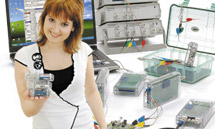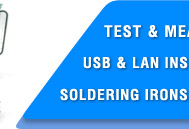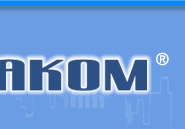|
|
ATE-6008 Tachometer
|
|
Display: 5 digits LCD display; accuracy: ±(0.05%+1digits); contact Test range: 2 to 20,000RPM; Non-Contact Test range: 2 to 99,999RPM; Tot test range: 1 to 99,999; resolution: 0.1RPM (2 to 9999.9 RPM), 1RPM. (over 10000 RPM); sampling time: 0.5s (over 120RPM); detecting distance: 2in to 19.7in/50mm to 500mm
Manuals:
|
|
AKTAKOM ATE-6008 digital tachometer provides fast and accurate contact and non-contact RPM and surface speed measurements of rotating objects
Features
- The Digital Tachometer provides fast and accurate Contact and Non-Contact RPM
and surface speed measurements of rotating objects.
- Measurement type: Rotation Speed (RPM,rPm), Total revolutions (REV), Frequency (HZ), Surface Speed (M/M,I/M,F/M,Y/M) and Length (M,In,FT,Yd).
- Wide measuring range and high resolution.
- High visible digital LCD and Backlight display.
- 40 reading memories: 10 selectable MAX measurements, 10 selectable MIN
measurements, 10 selectable AVG measurements, 10 selectable DATA
measurements.
- Laser sighting.
- 5 digits LCD display.
Specifications
- Display: 5 digits LCD display
- Accuracy: ±(0.05%+1digits)
- Contact Test range: 2 to 20,000RPM
- Non-Contact Test range: 2 to 99,999RPM
- Tot test range: 1 to 99,999
- Resolution: 0.1 RPM (2 to 9999.9RPM), 1 RPM. (over 10000RPM)
- Sampling time: 0.5sec. (over 120RPM)
- Detecting distance: 2in to 19,7in / 50mm to 500 mm
- Time base: Quartz crystal
- Power consumption: Approx. 45mA
- Battery: 9V
- Operation temp: 0°C to 50°C (32 to 122°F)
- Size(H×W×D): 6,3in × 2,4in × 1,7in / 160mm × 60mm × 42mm
- Weight: 5,6oz / 160g
Accessories
1. 9V battery
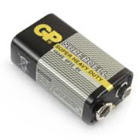
2. Gift box with carrying case
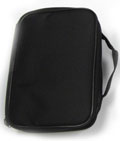
3. Contact adapter
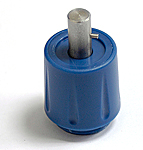
4. Roller for measuring linear speed
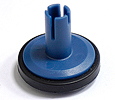
5. Roller for measuring rotation frequency

6. Roller for measuring rotation frequency

| ATE-6008 Tachometer - side view |
|
|
| ATE-6008 Tachometer - rear view |
|
|
| ATE-6008 Tachometer - with accessories |
|
|
|
Back to the section
|
|

